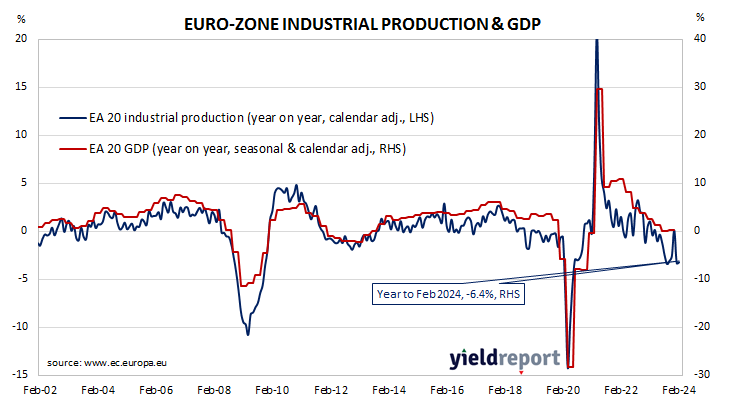Summary: Euro-zone industrial production up 0.8% in February, less than expected; down 6.4% on annual basis; German, French 10-year yields up noticeably; expansion in all four largest economies.
Following a recession in 2009/2010 and the debt-crisis which flowed from it, euro-zone industrial production recovered and then reached a peak four years later in 2016. Growth rates then fluctuated for two years before beginning a steady and persistent slowdown from the start of 2018. That decline was transformed into a plunge in March and April of 2020 which then took over a year to claw back. Production levels in recent quarters have generally stagnated in trend terms at best.
According to the latest figures released by Eurostat, euro-zone industrial production expanded by 0.8% in February on a seasonally-adjusted and calendar-adjusted basis. The rise was less than the 1.0% increase which had been generally expected but in contrast with January’s 3.0% drop after it was revised up from -3.2%. On an annual basis, the contraction rate slowed from January’s revised rate of 6.6% to 6.4%.
Long-term German and French sovereign bond yields both rose noticeably on the day as US yields rose significantly at the long end of the yield curve. By the close of business, the German 10-year bond yield had gained 7bps to 2.44% while the French 10-year yield finished 9bps higher at 2.96%.
Industrial production expanded in all of the euro-zone’s four largest economies. Germany’s production rose by 1.1% over the month while the comparable figures for France, Spain and Italy were 0.2%, 1.3% and 0.1% respectively.


